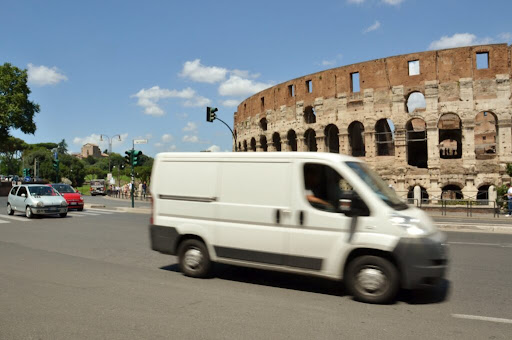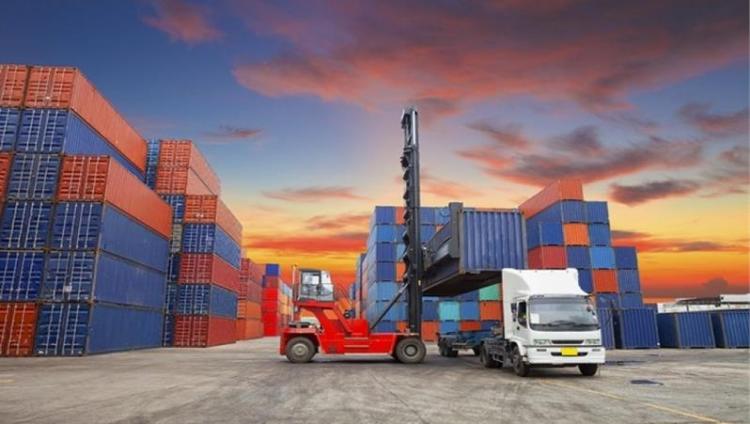Rome SULP: Physical Internet as backbone for future freight transport

The Challenge
The annual growth rate of urban logistic market is more of 8%. This rate is expected to remain stable at least until 2030. Meanwhile, urban logistics inefficiencies in Europe result in the waste of over 100 billion dollars annually.
Currently, in Rome Metropolitan Area and in Lazio Regional Area, there is not a node allowing to centralise the international freight flow in a unique platform. The reason lies in the limited attractiveness of the few intermodal infrastructures available and the lack of regional or at least metropolitan coordination. The development of an international gateway, defined as a logistic centre in which the international freight (import/export) is managed, could strongly improve freight transport intermodality thanks to the following added values:
- Establishing a new intermodal logistics hub can spur job creation in transportation, logistics, and related sectors. It can also attract manufacturing and retail industries, fostering economic efficiency and overall growth.
- Logistic Bill: the intermodal gateway for Central Italy can lower costs for businesses accessing markets, promoting regional growth and attracting investments, thereby generating employment.
- Modal shift to rail can ease strain on road networks, reducing congestion, wear and tear, and maintenance costs.
- Rail freight offers superior environmental performance, with six-fold lower energy consumption and pollution compared to road transport.
Given these benefits, finding a solution cannot be delayed.
The Solution
In September 2023, Rome Municipality unveiled the PMLS - Piano delle Merci e della Logistica Sostenibile (SULP), a comprehensive plan for sustainable goods and logistics. The drafting of the PMLS was the result of extensive consultation, involving key stakeholders in the metropolitan area. Through data exchange, SWOT analysis, and collaborative efforts, the plan prioritizes objectives centered on enhancing efficiency and decarbonizing urban and industrial logistics.
The plan encompasses various measures outlined across different scenarios with a detailed timeline provided in the document (PMLS pag. 78-81). These measures aim to:
- Enhance the quality of road and urban spaces.
- Rebalance modal mobility.
- Improve accessibility for both people and goods.
- Foster integration between mobility system development and territorial planning.
The implementation of Physical Internet principles, such as monitoring/tracking, information sharing, collaboration, standardization of containerization, and utilizing efficient modes, serves as the cornerstone for these measures.
Among the initiatives, a notable effort in digitalizing intermodal services, led by Rete Ferroviaria Italiana (RFI), is the Easyrailfreight platform. This platform is designed to facilitate intermodality by offering a comprehensive range of intermodal services available in the market.

Making an impact
Easyrailfreight has the following specific objectives:
- Foster the promotion and development of intermodal logistic services;
- Facilitate the take-over of supplementary services and allow the users to have a complete view of the services on the market.
In other words, Easyrailfreight has the ambition to become a leading example of Physical internet model implementation in Europe.
Consequently, Easyrailfreight would be the leading platform which gathers different methods of freight transport and allows customers to plan intermodal transport.

Lessons learnt
The imperative for a sustainable and efficient urban logistics solution in Rome is underscored by the burgeoning challenges and inefficiencies currently faced. The proposed PMLS leverages the principles of the Physical Internet, offering a promising avenue for improved quality of road and urban space, modal rebalancing of mobility, and enhanced accessibility for both people and goods. It becomes evident that the successful implementation of initiatives such as the Easyrailfreight platform holds the potential not only to reduce the environmental impact of urban logistics but also to revolutionise freight transport in our metropolitan area. With these measures in place, we pave the way for a sustainable, integrated, and economically viable urban logistics ecosystem that is an inspiration for European cities striving for a greener and more efficient future.


